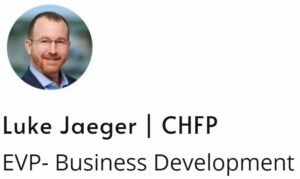Reader Topic Request: The Critical Role of Health Plan Subrogation Cost Containment Audits…. Plus, a Special Offer.

The Critical Role of Health Plan Subrogation Cost Containment Audits
Reader Topic Request:
The Critical Role of Health Plan Subrogation Cost Containment Audits…. Plus, a Special Offer.
From time to time, we will feature a topic based on reader feedback or requests. Todays Article comes from a reader question:
“Thanks for the article Luke. We have a subrogation provider in place today, they came as part of the offering when we switched administrators last year. We really haven’t seen much in recovery and don’t have direct access to the provider, not sure if this is typical. My question, though, is: How can we ensure they aren’t missing claims? – Cindy”
Great question Cindy. I know you didn’t ask specifically about what typically happens to your claims data and legacy lien pool, typically millions of dollars, when you switch administrators. We will cover that spicy topic in a later post…
With regards to your question on how to ensure your subrogation program isn’t missing claims, one of the most effective strategies to ensure financial efficiency is through a Health Plan Subrogation Cost Containment Audit. These audits not only help in identifying recoverable claims which may have been previously missed but also provide insights into your current process. Before diving into subrogation claims reviews, we’re excited to share an exclusive opportunity for our readers prompted by your question.
Special Offer: Complimentary Audit, up to 2 years of claims data.
Vengroff Williams is offering a complimentary audit of up to two years of health care claims data. This no-cost audit provides a chance to uncover potential recoverable claims that may have been missed by your current or prior vendor.
- To take advantage of this offer, simply go to https://vengroffwilliams.com/missed-recovery-review or contact Vengroff Williams and mention this reader response post [Cost Containment Reviews].
To date, we haven’t conducted a claims audit where an opportunity for recovery wasn’t identified.
Ok, back to Health Plan Subrogation Cost Containment Reviews
In this reader response we will delve into the critical importance of such reviews, especially for organizations whose current process is returning less than 3-4% of their plan spend annually. We will explore the key benefits, financial impacts, and the necessity of independent subrogation programs, concluding with a special benefit for readers of our education series.
Understanding the Value of Subrogation Reviews
Subrogation reviews are critical for identifying expenses that should not burden the health plan as they rightly belong to third-party payers. Such reviews dive deep into the claims to unearth instances where the liability should legally transfer to another party—be it auto insurers, workers’ compensation, or other insurance carriers. The primary benefits of conducting these reviews include:
- Recovery of Costs: Subrogation reviews help reclaim funds spent on claims that should have been the responsibility of third parties. This directly enhances the financial health of the plan.
- Reduction in Premiums: Regular recoveries from subrogation can lead to lower health plan premiums, as the overall expenditure decreases.
- Ensuring Compliance and Accuracy: These reviews ensure that claims are processed correctly and in accordance with the policy terms and legal guidelines. Identifying Recoverable Claims
Many organizations unknowingly pay for claims that should be covered by third parties, such as workers’ compensation or disability. A detailed review can pinpoint these claims, enabling the organization to seek reimbursement and reduce their out-of-pocket expenses.
Financial Impact: Real-world Benefits
Case studies from various organizations highlight the tangible benefits of subrogation claims reviews. For instance, a mid-sized manufacturing firm was able to recover over $2 million in a single fiscal year following a comprehensive review of their health plan claims. This recovery represented about 5% of their total health plan spend, a significant improvement over the industry average of less than 4%.
The Subrogation Review Process: A Closer Look
- Data Collection and Analysis: The first step involves gathering all relevant claims data and analyzing it to identify potential subrogation opportunities.
- Investigation: Each potential claim is thoroughly investigated to confirm the details and the context of the claim, ensuring the accuracy of the subrogation potential.
- Recovery Efforts: Once a claim is confirmed as a valid subrogation opportunity, efforts to recover the costs from the responsible third parties are initiated.
- Continuous Monitoring and Adjustment: Subrogation is not a set-and-forget process; it requires ongoing monitoring and adjustments to adapt to any changes in law or insurance policy conditions. Process Overview
This systematic approach ensures that potential recovery opportunities are not overlooked, maximizing financial returns.
Data Collection
The first step in a subrogation review is comprehensive data collection. This involves compiling all claims data, including medical records, billing information, and any correspondence related to the claims. Having a complete dataset is crucial for accurately identifying recoverable claims.
Analysis
Once the data is collected, it undergoes rigorous analysis. This step utilizes advanced software, claims databases, and expert scrutiny to identify claims that may be eligible for recovery. Analysts look for patterns and anomalies that suggest another party’s liability.
Verification
After potential recoverable claims are identified, they are verified through detailed cross-referencing with legal and medical records. This step ensures the legitimacy of the claims and prepares the groundwork for recovery efforts.
Recovery
The final step is the actual recovery process. This can involve negotiating settlements with third parties or pursuing legal action if necessary. Effective recovery efforts require expertise in both legal and medical aspects to ensure maximum reimbursement.
Case for Independent Programs
Many organizations rely on traditional vendors for their subrogation needs; however, these vendors often return less than 4% of the plan spend annually. Independent subrogation programs, by contrast, can drive significantly higher recoveries due to their focused expertise and innovative approaches. Independent programs are not tied to a single provider’s procedures or technologies, allowing them to adapt more quickly to specific organizational needs and regulatory changes. They use advanced analytics and machine learning technologies to identify subtle patterns and recovery opportunities that might be overlooked by traditional methods.
Bottom Line
For organizations looking to optimize their health plan expenditures, conducting a Health Plan Subrogation Cost Containment Review is not just beneficial; it’s essential. It ensures that funds are utilized judiciously, recoveries are maximized, and health plan costs are contained effectively. By choosing an independent subrogation program, organizations can achieve superior financial outcomes and maintain a competitive edge in managing employee benefits. CFOs and HR professionals should consider this proactive approach as a cornerstone of strategic health plan management.
